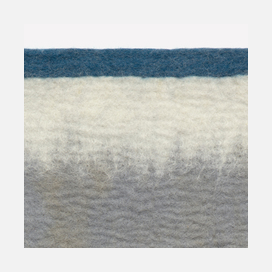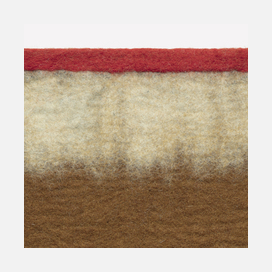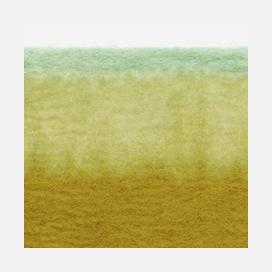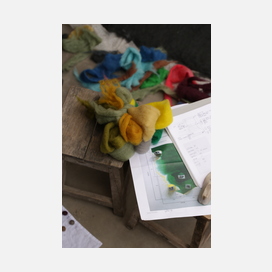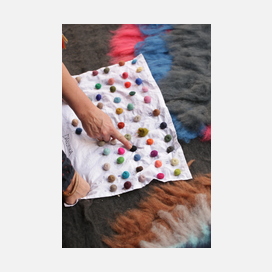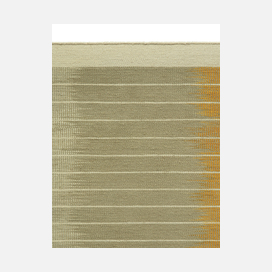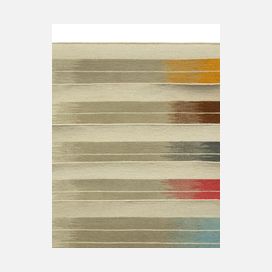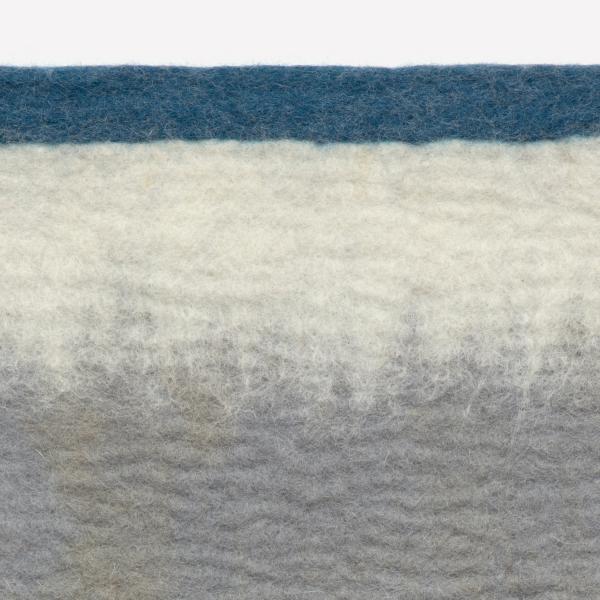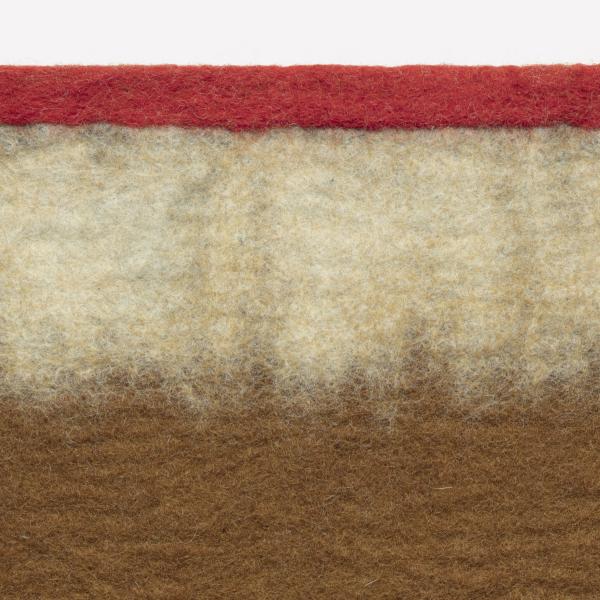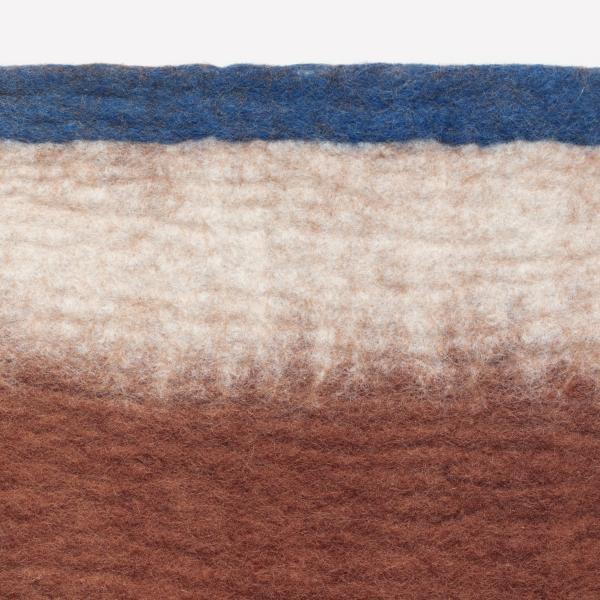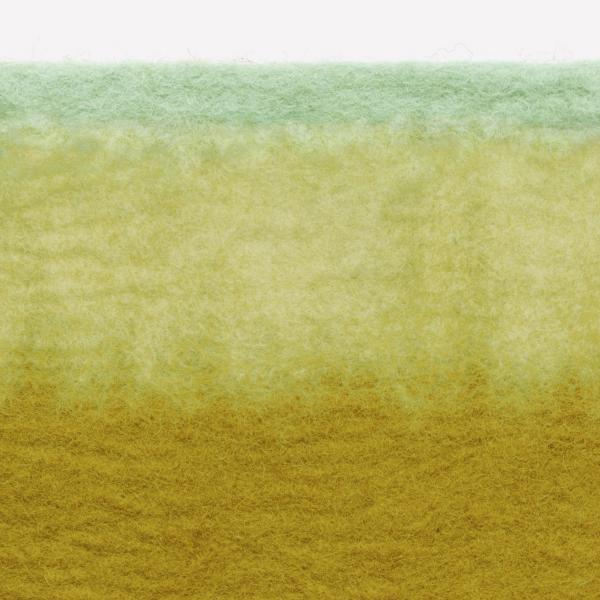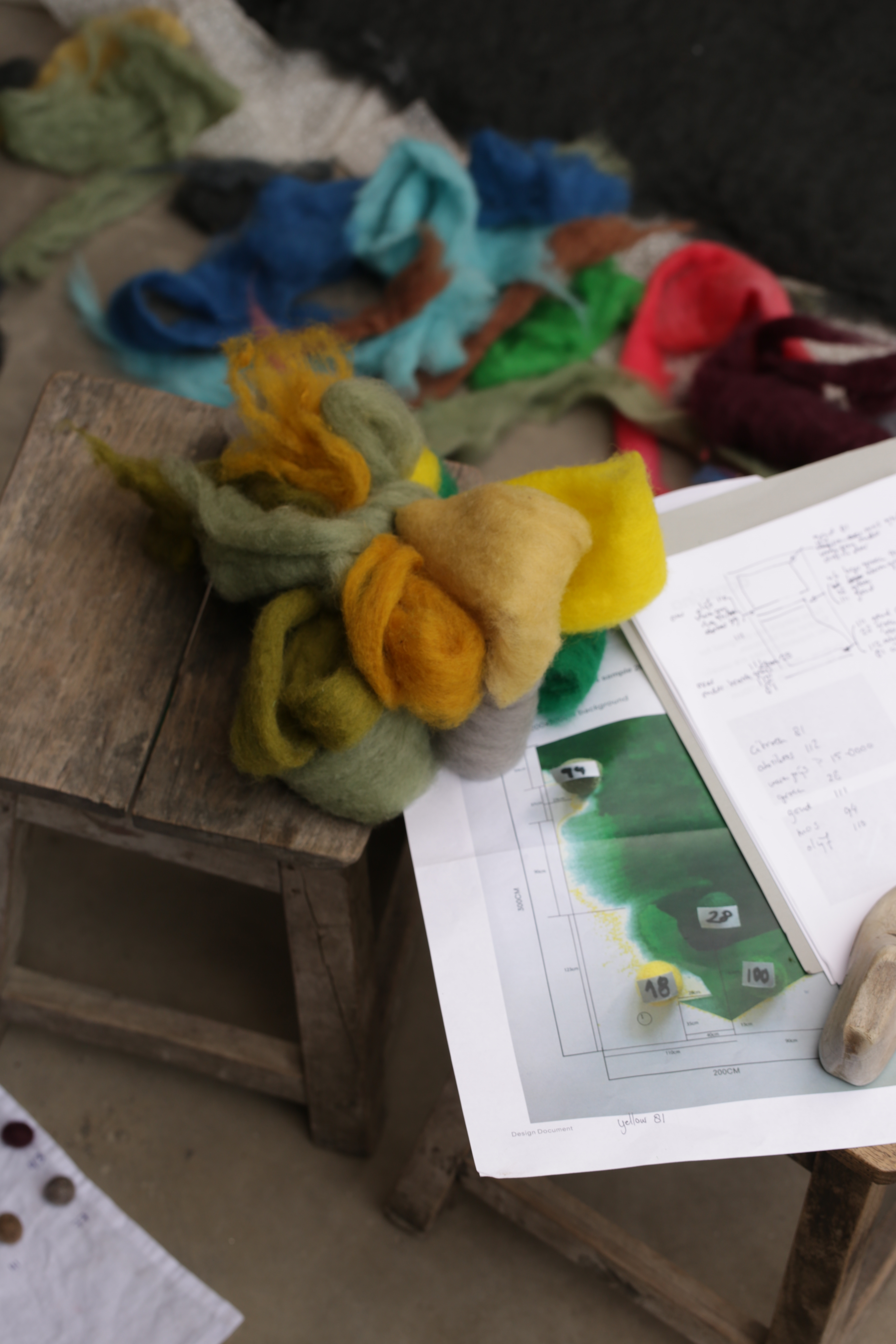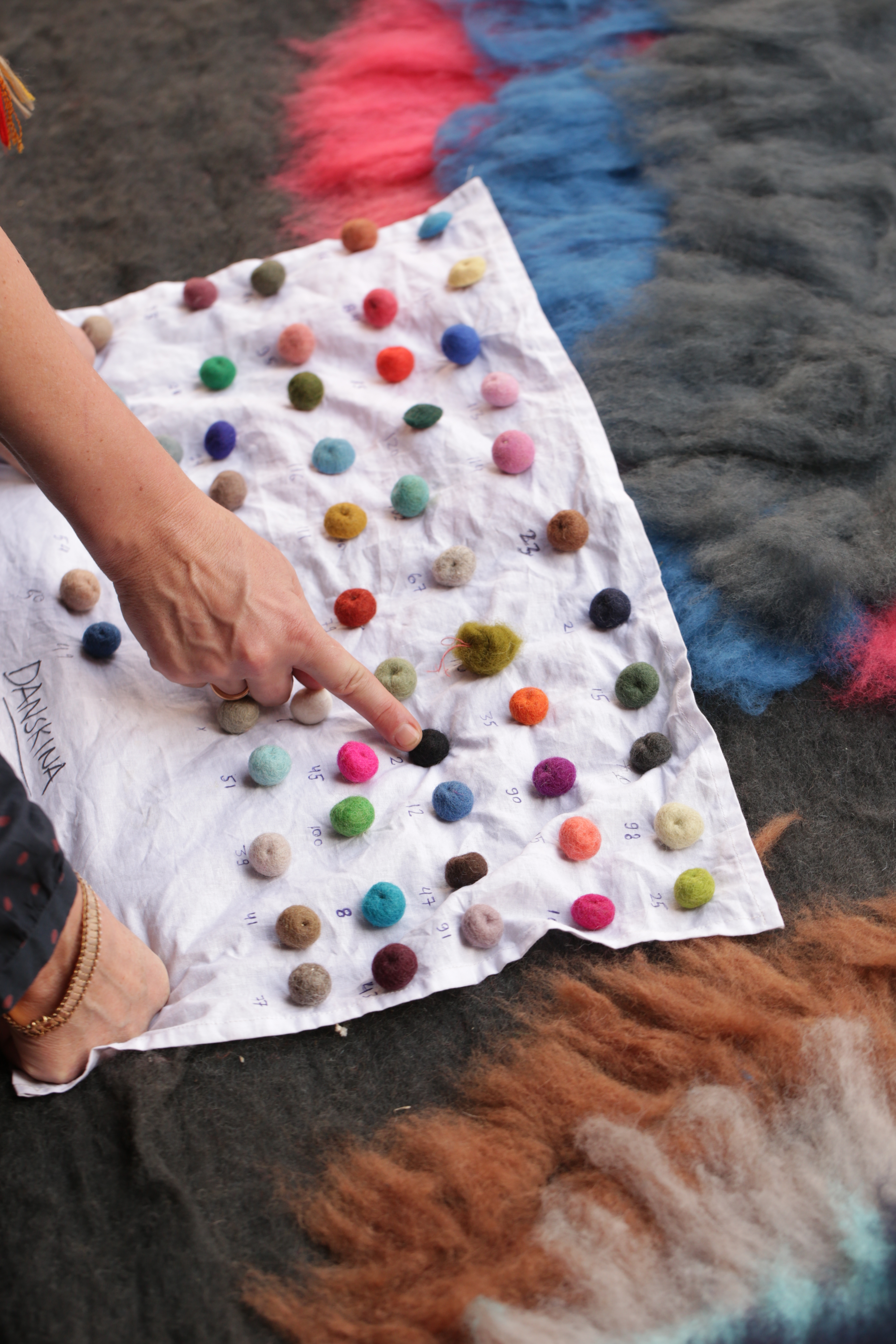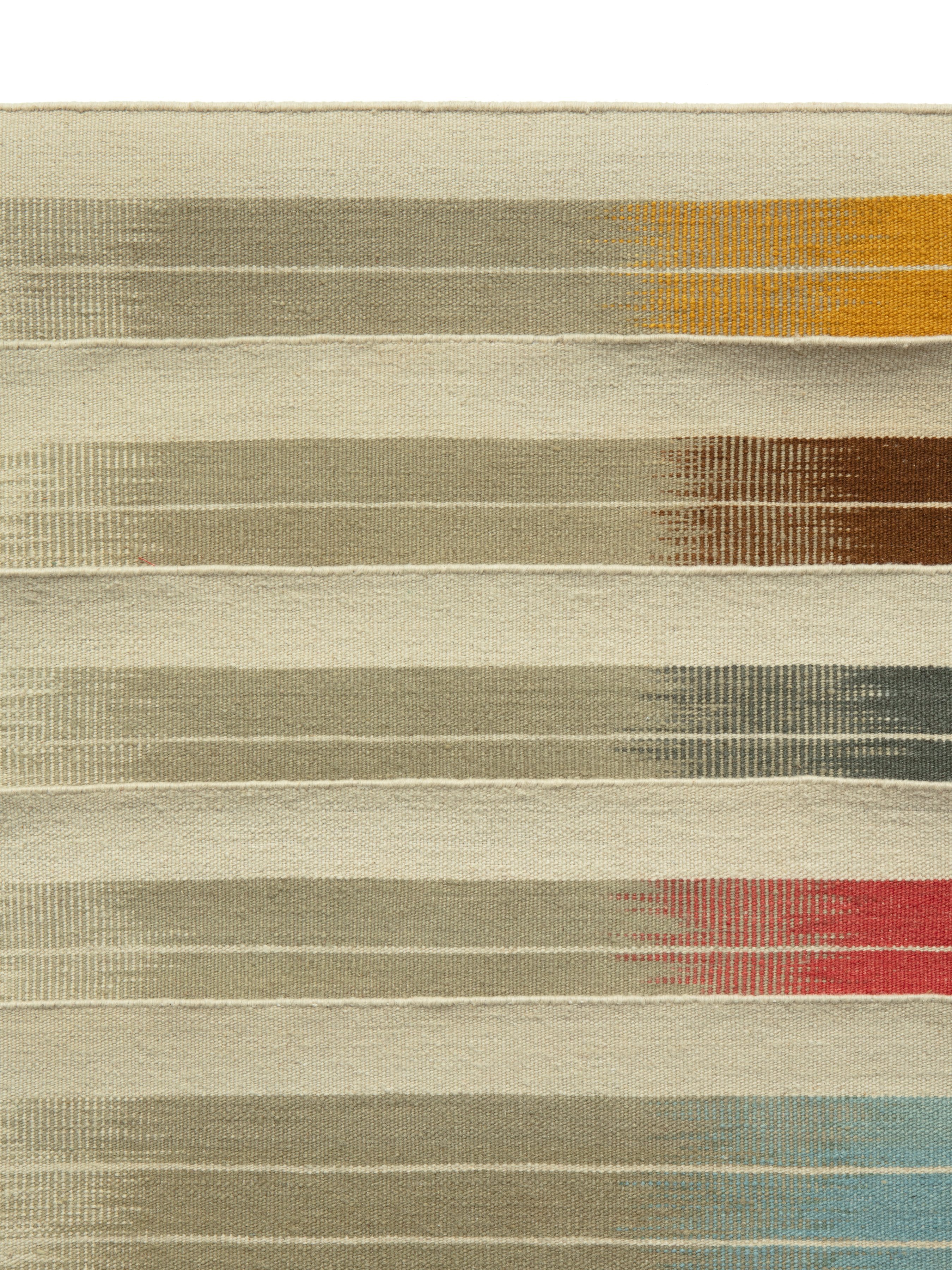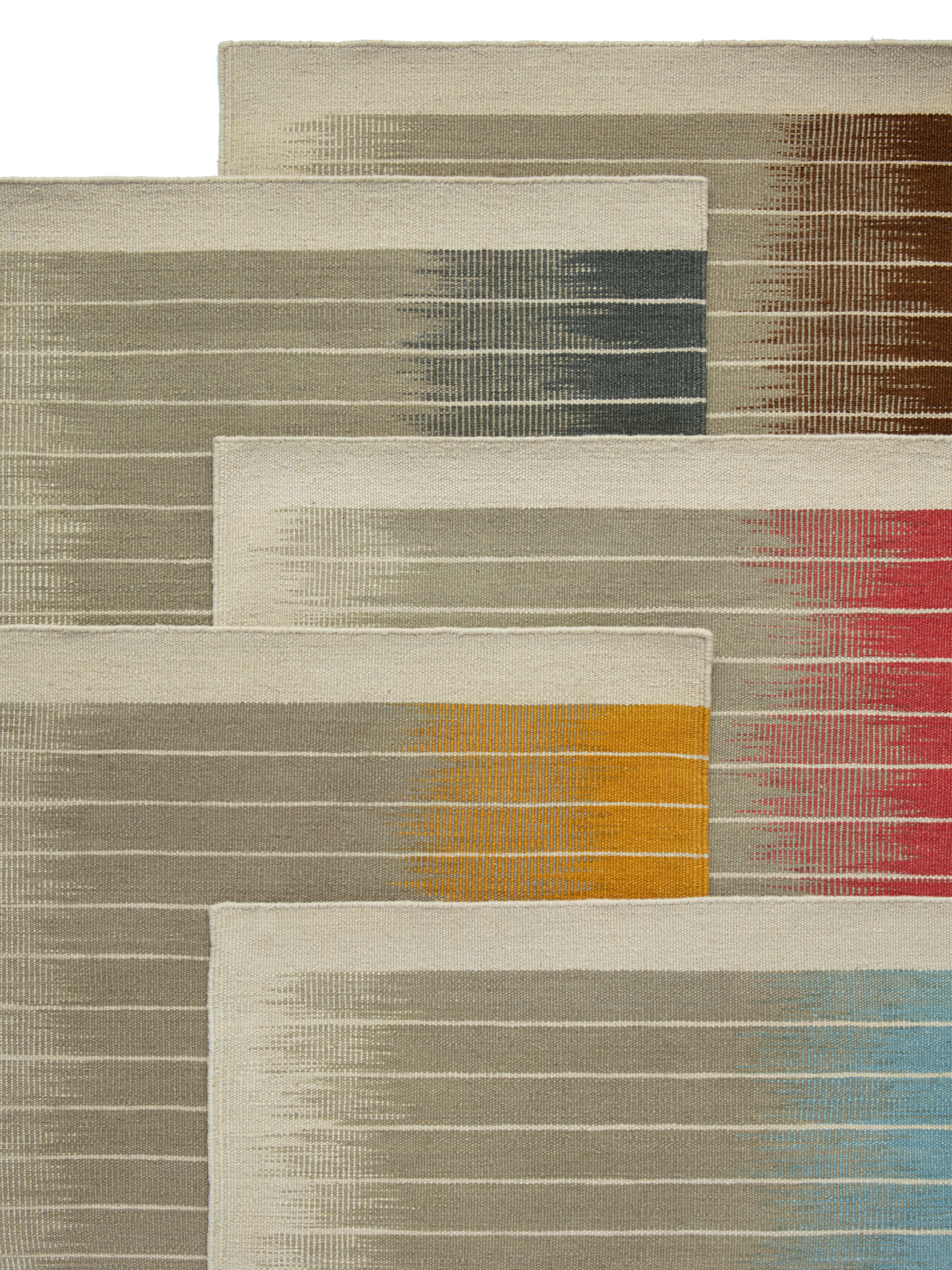Having designed over forty textiles in collaboration with Hella Jongerius, Maharam introduces two additions to a collection of rugs that explores tactility through exceptional fibers and weaving techniques. Both handwoven in Tibet, Shore— introduced in fall 2019—and Slope—launching in spring 2020—demonstrate Jongerius’s dedication to hand-rendered processes and the depth of personalization they create.
Referencing the soft color transitions of abstract expressionist Mark Rothko, Shore builds upon Jongerius’s interest in wool felt—a material she has explored for both its tactile and industrial qualities, beginning with upholstery textile Layers (2008). With Shore, Jongerius sought to create the translucent blending of watercolor in tactile form. She says: “You can never touch a piece of art, although some are appealing enough to be touched. In art you miss the experience of the value of texture.” Often looking for ways to bring tactility to modern interiors, Jongerius says: “I wanted to design haptic color paintings to use. I find it very important that we accelerate this experience of texture in a world that has become so digital.” Shore is hand-felted in a time-intensive process by a group of skilled craftswomen in Kathmandu, Nepal, who wash, soak, and dye individual tufts of wool that are layered into a gradual ombre before being rolled and pressed by hand. In a method Jongerius describes as “cooking with color”, the artisans achieve painterly transitions with nearly transparent layers of wool in unexpected color combinations—a Jongerius signature.
Made from Tibetan wool and cotton, Slope’s intricate ikat pattern is achieved by dyeing tightly wrapped bundles of yarn by hand before meticulously aligning each yarn in an overall pattern on a loom. This traditional dyeing and weaving technique, which Jongerius refers to as a “tie-dye woven construction,” allows for both graphic precision and randomized color expression. Jongerius notes: “In Slope you see that the absorption of colors in the yarns lends a great artisanal effect. I was interested in the blurriness of hand-dyed yarns whose colors behave in surprising and erratic ways while on the other hand ikat requires great precision.” Referencing a traditional flat-woven kilim, Slope adopts contemporary features of graphic stripes, open ground, and an earthy palette of sepia, gold, currant, gray, olive, and ecru.
About Hella Jongerius
A graduate of Design Academy Eindhoven, Hella Jongerius has been a standout in the world of product design since her early work for Droog, the Dutch design collective. She founded Jongeriuslab in Rotterdam in 1993 and moved to Berlin in 2009. Jongerius’s unique approach to craft from the perspective of industry, and her ability to combine these seemingly oppositional methods of production, has allowed her to create individuality on a mass scale. Her work ranges from one-offs and limited editions exhibited at galleries to consumer products available through companies like Vitra, Nymphenburg, Royal Tichelaar Makkum, and IKEA.
Hella Jongerius and Maharam have been collaborating since 2001. Several of the resultant textiles are now in the permanent collections of museums worldwide, including the Art Institute of Chicago; the Cooper Hewitt, Smithsonian Design Museum; the Museum of Modern Art; the Museum Boijmans van Beuningen; and the Stedelijk Museum, among others. In 2017, Maharam proudly sponsored Breathing Colour, an exhibition examining Jongerius’s distinct approach to color and form through a series of vibrant installations at the Design Museum in London.
